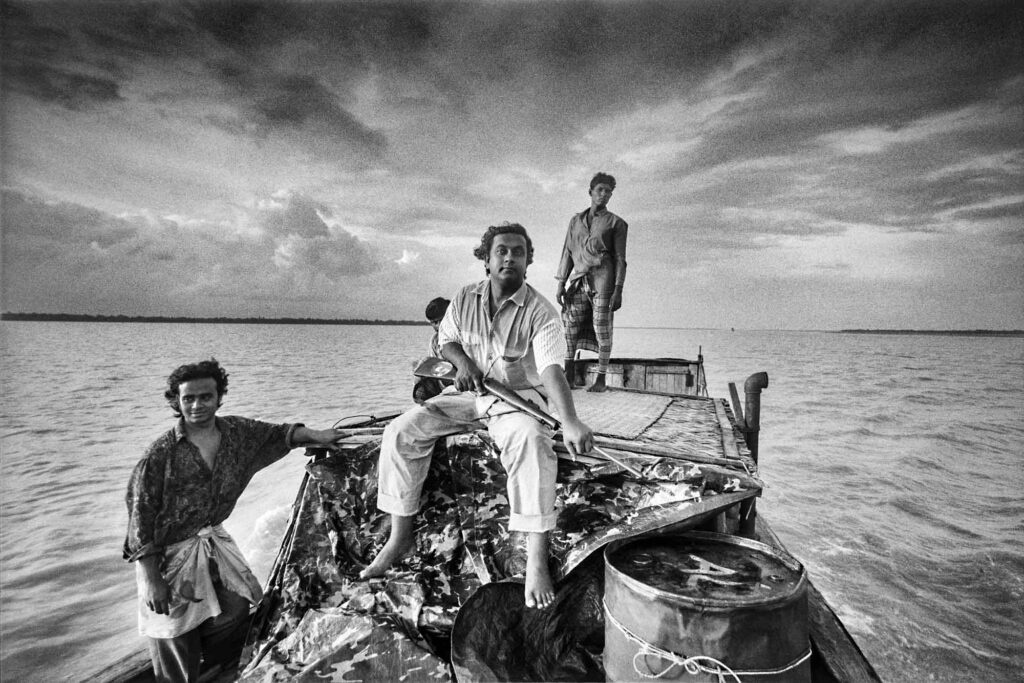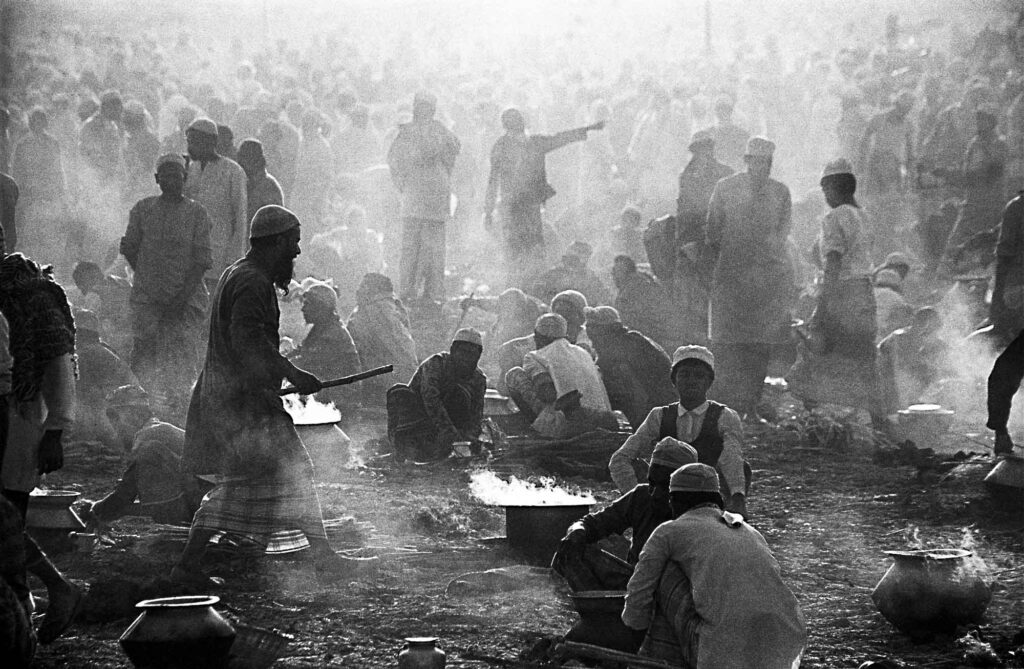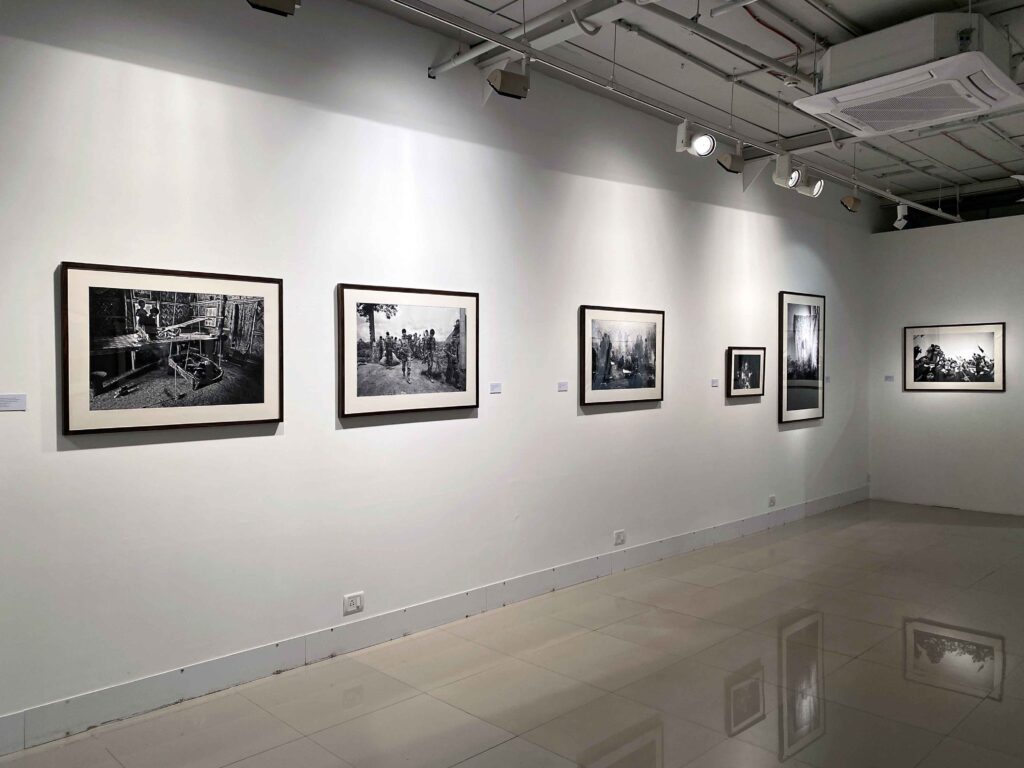Title: Singed But Not Burnt by Shahidul Alam
Presented by Sakshi Gallery in collaboration with Emami Art, Kolkata.
Curated by: Ina Puri
Duration: 25 April 2024–22 May 2024
Venue: Sakshi Gallery, Third Pata Lane, Colaba, Mumbai
Sakshi Gallery, Mumbai presented a thought-provoking retrospective exhibition of Bangladesh’s ‘ace photographer Shahidul Alam Singed But Not Burnt curated by Ina Puri and in collaboration with Emami Art, Kolkata. Through his photographs, he has articulated the rein of the unjustly treated and the oppressed. Beyond being a photographer Alam is also a human rights activist, writer, and curator. He has captured some thought-provoking and historical images of Bangladesh from a woman casting her vote shrouded by a curtain to Begum Khaleda Zia contesting the prime ministral elections against Sheikh Awami League.

Limited Edition 2 of 3, 20 x 30 inches
Born in Dhaka, in 1955, Shahidul Alam was formally educated in the United Kingdom. He studied and taught chemistry in London, where he obtained a PhD from the University of London. Photography came to him by accident. A friend of his asked him to buy him a camera in New York. However, as the friend did not want the camera he kept it. This small item opened an exciting new world for him. After the initial thrill of capturing sport, nature, and women he moved on to other subjects where he told the stories of ordinary people with real problems. Furthermore, his experiments with the medium won him the Harvey Harris Trophy for ‘The Floating Forest’ in 1983. Alam’s lens captures the passing moments of life, imbuing them with a profound compassion.

Limited Edition 1 of 3, 20 x 30 inches
Bangladesh was going through political turmoil during the dictatorship of Lieutenant-General Hussain. Despite strict censorship, Alam and his colleagues continued to take photographs: their camera became their weapon of protest. They celebrated Ershad’s defeat with an exhibition in art colleges that over 40,000 people witnessed in three and a half days.” People were starved for these images. Finally, the first democratic election was held in the country. In The Woman at the Ballot, the protagonist celebrates her right to vote as it was the first time in the history of Bangladesh, a fair and free election was held. Light comes through the window and lights up the simple white cloth that has been used to create a ballot box.

The woman realizes that this stamp on a ballot paper would be in exchange for Noor Hossain’s death.
“The documentation of injustice, especially against the downtrodden can have many outcomes, from creating a historical record to bringing about public awareness, or even enabling policy change, but the most important outcome is the humanisation of others, and through that perhaps the humanisation of ourselves. It is a healing tool,” states Shahidul Alam.
His narrative is a blend of creativity and innovation. His work traverses spirit, hope, and tales, inviting viewers to see the world through his eyes, as he documents different aspects of Bangladesh life. A remarkable photograph is that of a woman cooking on the rooftop in a cyclone hit Jinjira, Dhaka in 1988. This picture examines the fragility of human existence and speaks about life and the human spirit on a most profound level.
It resonates with the resilience and fortitude of the young nation revealing their unique life force.
“Alam’s photographs are about people and their destinies. About our collective destiny and why we need change. It’s about the power of the image,” says Geeta Mehra, the owner of Sakshi gallery.
In Major Zia in Sunderbans, he has captured freedom fighter Zia sitting fearlessly with a gun in his hand denoting the spirit of the country fighting for their freedom.
He has captured the peaceful spirit of the annual Muslim congregation in Tong, Bangladesh in Bishsho estemah 56. This three-day prayer gathering exudes their solidarity and mutual love. He once again arrests the children’s joyous spirit in Children Flower Sellers throughtheir smiles and glows in their eyes.
Some years ago Alam’s Kalpana’s Warriors (2015), which was first shown in Bangladesh and, in 2016, in Delhi, is a good example. It was an unusual exhibition of laser etchings on straw and giclee prints, which record the life of Kalpana Chakma, a courageous young indigenous woman of the Chittagong Hill Tracts in Bangladesh. It is a sad story from 20 years ago about the suppression of Kalpana’s voice that protested against displacing of the hill people to make the Captain Lake. She demanded equality and spoke against the military occupation. He photographed her personal objects and created a sense of the missing woman. He decided to photograph the warrior people who supported her. I mention it because the images were firmly entrenched in my mind’s eye when I viewed it in Delhi some years back. However, due to technical reasons, it was not shown in Mumbai.
“The innovation extends beyond photography to encompass Alam’s pioneering efforts in digital media and online activism. He has leveraged the internet and social media platforms to amplify the voices of marginalised communities, mobilise support for social justice causes, and circumvent censorship and government repression. Through his innovative use of technology, Alam has transformed the landscape of activism and advocacy, making it more accessible and inclusive than ever before,” Ina Puri
Alam’s contribution to Bangladesh has been immense. He established the Drik Picture Library and the Pathshala South Asian Media Institute. This photography centre became a platform to initiate creativity and innovation, providing aspiring photographers with the tools, resources and mentorship they need to sharpen their craft and make a difference in their communities.
Read More>> Please Subscribe our Physical Magazine